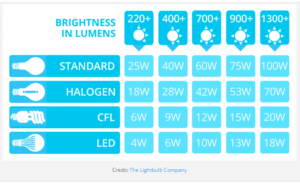Lighting and Power Points
- Cheap quality bulbs are thinner and changes in power surge can break them.
- Loose connections between the lamp/light holder and the bulb, due to electricity jumping from the bulb source instead of flowing effortlessly; increasing heat.
- Bulb pitting occurrence due to electrical arcing, causing electrical interference and increased heat, blowing the bulb.
- Circuit cross connections.
- Overcurrent circuit stimulation caused by incorrect fusing or insufficient circuit breakers.
- Damaged or corrupted wiring.
- Secondary mechanical vibrations from appliances, sound waves, foot traffic or other sources may contribute to delicate or cheaply made lights blowing.
Done with troubleshooting? Not sure about why your bulbs keep blowing? Contact Taylor Made Electrical for an inspection.
Put simply, yes. LED lights utilise significantly less electricity compared to the traditional lights (incandescent, halogen, and compact fluorescent), this is because LED only use an estimated 80% of energy compared to halogen lights. Long-term LED implementation excels for drastically reducing electricity bills and long-term lighting maintenance, however, there are some things to consider prior to making the switch.
- The upfront cost of LED lights is more expensive than traditional lighting, averaging from $8 to $20 per bulb. LED lights have extensive longevity compared to traditional lighting with an average of four to five times lifetime usage, therefore, also reducing maintenance and further replacement costs.
- If you require a dimmer light, you must purchase an LED light that is compatible with conventional dimmers, or for safer and reliable options have your current dimming switch replaced by an electrician.
Buying LED Tips
Find the right colour LED light. LED lights can be quite bright and if you’re wanting ambiance, you’ll want to make sure your bedroom or living areas are perfectly aligned with your flavour.
Bright white: Ideal for task lighting and provides cool tones, keeping you more alert and enhancing concentration.
Soft white: These are bright and cool, however less harsh than a bright white.
Warm white: These are similar to traditional incandescent bulb lighting with a yellow hue.
LED brightness is measured by lumens, so instead of comparing watts, you’ll want to compare lumens.

Generally, this means your safety switch has tripped and as a safety mechanism, has stopped power supply to your power points. If it is the safety switch, check your switchboard to see if it has been switched to the “off” position.
You can reset the safety switch with a ‘test’ button, if your safety switch trips again, you’ll need to do a little investigating.
- Step 1: Unplug the last used electrical appliances from the power points that may have triggered the trip and reset the safety switch. If this fixes the problem, avoid using that appliance until it has been checked by an electrician.
- Step 2: If the problem still occurs, remove ALL household appliances from the power points inc. fridge, pool, spa, dishwasher etc) and attempt to reset the safety switch.
- If this resolves the electrical fault, then we now know the situation is linked to an appliance within the home. Here’s the fun part, turn on your sound system, put on your favourite Jam and turn it up! Now, plug in your appliances and turn them on one at a time so you can determine the culprit.
- If your problem is still unresolved, it’s time to bring in the pros. Contact us here to organise an inspection.
Whilst flickering lights may not be dangerous, it may mean there is a bigger issue requiring attendance.
Fluorescent and LED lights are more prone to flickering, this may be caused by loose connections. Try tightening or replacing the lights and if the flickering continues, it could be your switch.
If it looks like your switch, you can use the ol’ switch toggle trick and the ‘turning it off and on’ back-up. If this doesn’t resolve the issue you can replace the switch.
If you’re still not having luck, investigate whether your light flickering is linked to an appliance. If it is, then it can potentially be your voltage fluctuating or a more serious electrical fault.
It’s time to call an electrician if you have found loose wiring, voltage fluctuations or you think there is an underlying issue in your electrical system. If your lights flicker, it is worth the investigation to avoid further damage or safety hazards.
This fun little noise means that the currents are jumping between the metal wires (this is called arcing), it creates the zapping sound. The electrical current should flow continuously through the metal pathways. Prolonged insufficient electrical flow can increase heat, burn the contacts, wiring, and switches, leading to fires and should be taken seriously.
Dimmer switches can make a mild humming noise as they work on a variable rheostat, this is generally normal. If the noise is constant it may mean an electrical current abnormality or a defective switch.
Is it dangerous if my light switches are hot to touch?
If your switch is warm or hot to touch, this is a warning sign of an internal short circuit and should be addressed immediately. Switches should never be hot to touch and it’s time to call an electrician.